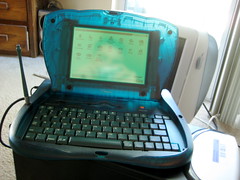Apple quarterly results: Number of the night
October 21st, 2008298,000
That’s how many people (half of 596,000) bought a Mac at an Apple retail location who have never owned a Mac before. Three hundred thousand people just last quarter, shopping at Apple’s 247 retail locations, who have embraced the Mac way of life.
That’s about 2,400 Macs per store, per quarter. Overall, Apple sold 2.6 million Macs this summer.
It’s amazing. So many people are switching, Apple is having record-breaking quarters (read the full transcript of today’s quarterly earnings call).
That, and with 13 million iPhones in the hands of users – more than 10 million sold this year alone – an increasing number of people are switching to the Apple way of doing things. More Macs, more iPhones (about 7 million last quarter), even more iPods (11 million sold).
Says Steve Jobs:
We don’t yet know how this economic downturn will affect Apple. But we’re armed with the strongest product line in our history, the most talented employees and the best customers in our industry. And $25 billion of cash safely in the bank with zero debt.
Who can argue with that? And zero debt? Apple is living the Dave Ramsey lifestyle and they probably don’t even know it yet.
Those 300k new users? Let’s embrace them, and welcome them with open arms. Their life is about to get a whole lot more fun.













